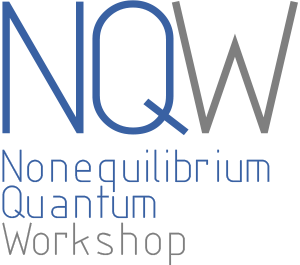
- This event has passed.
Ultrafast manipulation of the NiO antiferromagnetic order via sub-gap optical excitation
December 14, 2021 @ 10:45 - 11:10 CET
X. Wang,1 D. Turenne,1 V. Shokeen,1 A. Yaroslavtsev,1 I. Vaskivskyi,2 O. Grånäs,1 R. Y. Engel,3 J. Schunk,3 S. Dziarzhytski,3 G. Brenner,3 R.-P. Wang,3 M. Kuhlmann,3 F. Kuschewski,3 M. Beye,3 W. Bronsch,4 F. Parmigiani,4 C. Schüssler-Langheine,5 A. Steyervoyedov,6 S. S. P. Parkin,6 O. Eriksson,1 H. A. Dürr1
1Department of Physics and Astronomy, Uppsala University, 751 20 Uppsala, Sweden.
2Deutsches Elektronen Synchrotron, 22607 Hamburg, Germany.
3Complex Matter Department, Jozef Stefan Institute, Ljubljana, Slovenia.
4Elettra Sincrotrone Trieste S.C.p.A. Strada Statale 14 – km 163.5 in AREA Science Park 34149 Basovizza, Trieste, Italy.
5Helmholtz-Center Berlin für Materialien und Energie, Hahn-Meitner-Platz 1, 1419 Berlin, Germany.
6Max-Planck Institut für Mikrostrukturphysik, Weinberg 2, Halle, Germany.
Wide-band-gap insulators such as NiO offer the exciting prospect of coherently manipulating electronic correlations with strong optical fields [1]. Contrary to metals where rapid dephasing of optical excitations via electronic processes occurs, the sub-gap excitation in charge-transfer insulators has been shown to couple to low-energy bosonic, probably phonon, excitations [2]. Here we use the prototypical charge-transfer insulator NiO to demonstrate that sub-gap excitation leads to a renormalized NiO band-gap in combination with a significant reduction of the antiferromagnetic order. We employ element-specific x-ray absorption spectroscopy at the FLASH free electron laser [3] to demonstrate the reduction of the upper band-edge at the O 1s-2p core-valence resonance whereas the antiferromagnetic order is probed via x-ray magnetic linear dichroism (XMLD) at the Ni 2p-3d resonance. Comparing the transient XMLD spectral lineshape to ground-state measurements [4] allows us to extract a spin temperature rise of more than 60 K for time delays longer than 400 fs. This is accompanied by a band-gap reduction. Before 400 fs a non-equilibrium state is formed characterized by O 2p mid-gap states. We will discuss these results in terms of a transient Ni-O charge transfer during the optical driving field. The energetic proximity of our 800 nm excitation wavelength to phonon-assisted NiO d-d transitions facilitates the bosonic dressing of the laser field. Finally, laser-excited phonons [5] couple to magnons on a ~400 fs timescale enabling the quenching of the NiO magnetic order [6].
References:
- N. Tancogne-Dejean, M. A. Sentef, A. Rubio, Phys. Rev. Lett. 121, 097402 (2018).
- F. Novelli, et al. Nature Commun. 5:5112 (2014).
- R. Y. Engel, et al. Appl. Sci. 10, 6947 (2020).
- D. Alders, et al. Phys. Rev. B 57, 11623 (1998).
- Y. L. Windsor, et al. Phys. Rev. Lett. 126, 147202 (2021).
- P. Maldonado, Y. O. Kvashnin, Phys. Rev. B 100, 014430 (2019).


